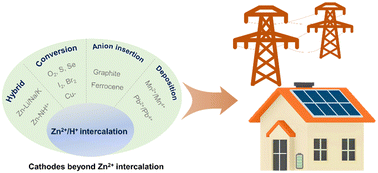Advanced cathodes for aqueous Zn batteries beyond Zn2+ intercalation
Abstract
Aqueous zinc (Zn) batteries have attracted global attention for energy storage. Despite significant progress in advancing Zn anode materials, there has been little progress in cathodes. The predominant cathodes working with Zn2+/H+ intercalation, however, exhibit drawbacks, including a high Zn2+ diffusion energy barrier, pH fluctuation(s) and limited reproducibility. Beyond Zn2+ intercalation, alternative working principles have been reported that broaden cathode options, including conversion, hybrid, anion insertion and deposition/dissolution. In this review, we report a critical assessment of non-intercalation-type cathode materials in aqueous Zn batteries, and identify strengths and weaknesses of these cathodes in small-scale batteries, together with current strategies to boost material performance. We assess the technical gap(s) in transitioning these cathodes from laboratory-scale research to industrial-scale battery applications. We conclude that S, I2 and Br2 electrodes exhibit practically promising commercial prospects, and future research is directed to optimizing cathodes. Findings will be useful for researchers and manufacturers in advancing cathodes for aqueous Zn batteries beyond Zn2+ intercalation.



 Please wait while we load your content...
Please wait while we load your content...